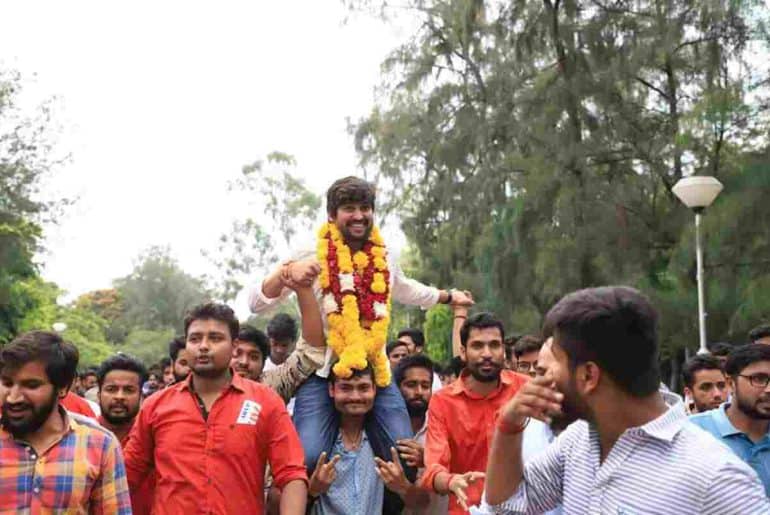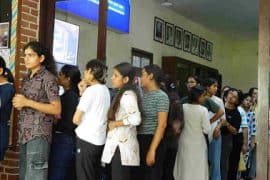Student Politics is believed to be a product of the present times. Yet, there are historical pieces of evidence that suggest otherwise. Read ahead to find out more.
When the students of Jawaharlal Nehru University (JNU) protested against the punishment given in the case of the 2001 Parliament attack, students including Kanhaiya Kumar and Umar Khalid got arrested. When the Literary Society of the Ramjas College, University of Delhi decided to invite Umar Khalid to speak in a seminar on ‘Cultures of Protest’ in 2017, a fight broke out. What was supposed to be a peculiar argument turned out to be a massive protest, involving everyone from students to renowned political faces. Students have been a part of the political sphere for quite some time now but should students be a part of this political arena? When the involvement of political parties in student politics has increased for their benefit of expanding the core strength of the party, should students step into it? It is believed that Student Politics is a product of the current decade. However, student politics is not just ABVP or NSUI, it has a history that accounts for its greater place in the democracy.
Pre-Independence
There is no starting point but the late 19th century and early 20th century saw the students getting involved in political matters. The swadeshi movement that was led as part of the anti-partition movement saw active participation of school and college students. Because of this situation, the students who were found guilty were stripped of their scholarships, expelled, or fined. What followed this movement was a consciousness to protest against the unjust that was being served. The students like Khudiram Bose and Prafulla Chaki actively participated in politics. As the movements developed with time, people realized that violence could make the Britishers leave the country. The non-cooperation movement too saw a wide participation of students. They boycotted their schools and colleges that were government-affiliated to show their solidarity with the movement.
An indelible name in Indian history is that of Bhagat Singh, a student of National College, Lahore who had his roots running deep into politics. His commitment to ‘inquilab’ (revolution) inspired a wave of students across the country. His political ideologies did differ but the goal remained the same, to sleep in a free country. The students continued to march for freedom. They were fierce and focused. They did not cease until they achieved swaraj. This political involvement of the students gave rise to a certain culture of student politics that this country was about to experience.
Post-Independence
India was deeply engrossed in realizing its new dreams that were to shape the country which was reeling from the state of shambles. The nation was disintegrated on the grounds of various socio-economic factors. Yet, the political breeze was always prevailing. Even during the demand for linguistic states, protests broke out across the country which again saw active participation of the students. Further, the Naxalite movement that started in 1967 saw enormous support from the students. With the onset of the recession, India was about to fall into the grips of an economic crisis. Students saw this as a threat to their future prospects of employment and this directed them to join the Naxalite movement. Political involvement of the students was well active in this period and continued to remain the same in the coming years.
The Navnirman Andolan in 1974 was a movement led by the students in Gujarat against a hike in hostel food fees. Clashes between students and police provoked an indefinite strike across the educational institutions in Gujarat. This led to the resignation of Chimanbhai Patel. Nav Nirman Yuvak Samiti was formed during the movement. They demanded the dissolution of the state assembly and for holding fresh elections. Further, Morarji Desai went on a hunger strike, and then Prime Minister, Indira Gandhi had to give in. The day the election results were declared was the same day when the verdict on the latter’s electoral malpractices came. In the same year, the Bihar movement was initiated by the students which were led by Jayaprakash Narayan. The political movement was against the anarchy in the state government. This movement led to the formation of Bihar Chhatra Sangharsh. However, the movement later turned against former Prime Minister Indira Gandhi (Sampoorna Kranti). As a result of all these, a national emergency was imposed by Indira Gandhi.
Emergency saw the suspension of all the democratic practices. This was resisted by all the sections of society, especially students. The government used repressive actions against the involvement of students in politics. This led to brutal consequences like the Rajan Case. P.Rajan was an engineering student who died as a result of torture in police custody during the Emergency in Kerala. Jailing and torturing the students because of their political support is a ‘trend’ of 1975 which found its place even in today’s times.
Present
Student politics has its roots through the pages of Indian history. As the times change, people learn more. The knowledge of a twelve-year-old child would be merely numbers and letters for the same-age child ten years into the future. This enhancement helps in a better understanding of the world and leads to demand for a better place to live. The students’ participation has always been there but has increased with the increase in their capacity to comprehend. Nevertheless, student politics will always be present and never cease to grow for better democratic functioning.
Read Also: ‘Bhakts vs Liberals’: Who Wins in Divisive Politics?
Featured Image Source: Youth Ki Awaaz
Ankita Baidya





Comments are closed.